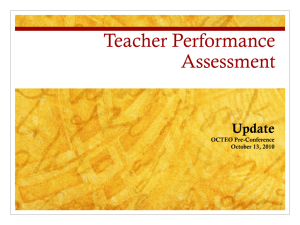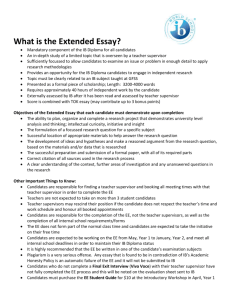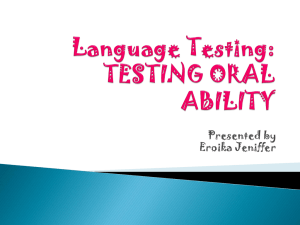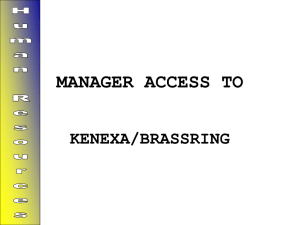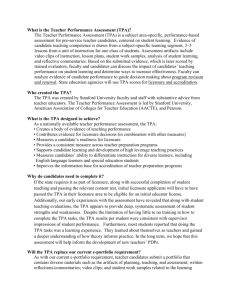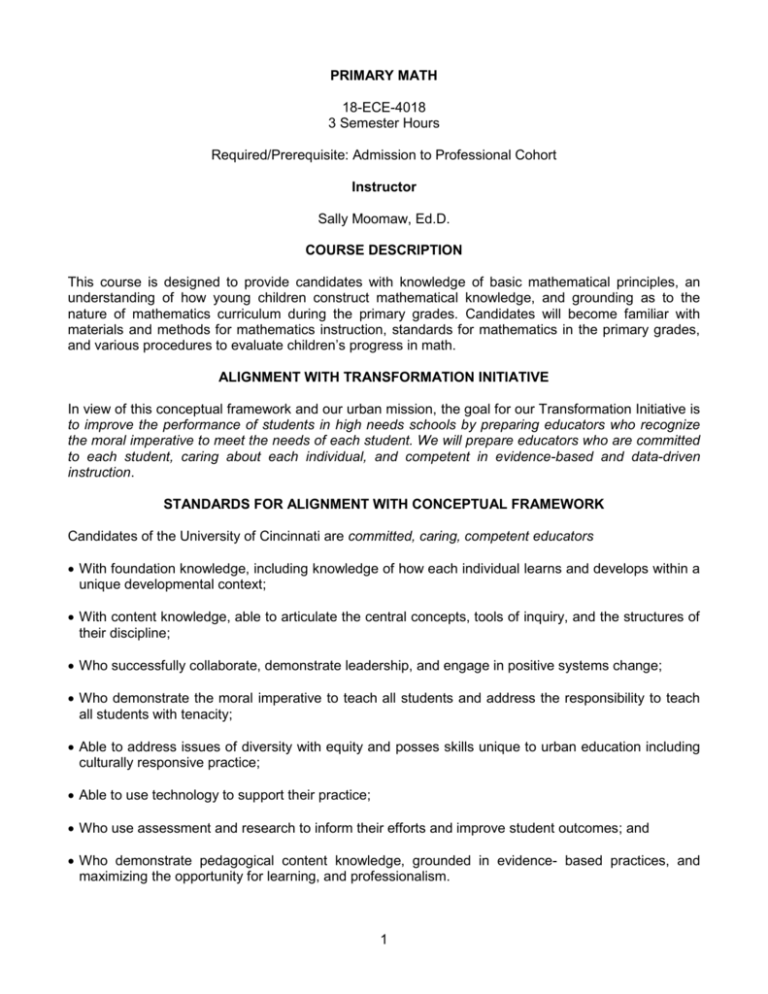
PRIMARY MATH
18-ECE-4018
3 Semester Hours
Required/Prerequisite: Admission to Professional Cohort
Instructor
Sally Moomaw, Ed.D.
COURSE DESCRIPTION
This course is designed to provide candidates with knowledge of basic mathematical principles, an
understanding of how young children construct mathematical knowledge, and grounding as to the
nature of mathematics curriculum during the primary grades. Candidates will become familiar with
materials and methods for mathematics instruction, standards for mathematics in the primary grades,
and various procedures to evaluate children’s progress in math.
ALIGNMENT WITH TRANSFORMATION INITIATIVE
In view of this conceptual framework and our urban mission, the goal for our Transformation Initiative is
to improve the performance of students in high needs schools by preparing educators who recognize
the moral imperative to meet the needs of each student. We will prepare educators who are committed
to each student, caring about each individual, and competent in evidence-based and data-driven
instruction.
STANDARDS FOR ALIGNMENT WITH CONCEPTUAL FRAMEWORK
Candidates of the University of Cincinnati are committed, caring, competent educators
With foundation knowledge, including knowledge of how each individual learns and develops within a
unique developmental context;
With content knowledge, able to articulate the central concepts, tools of inquiry, and the structures of
their discipline;
Who successfully collaborate, demonstrate leadership, and engage in positive systems change;
Who demonstrate the moral imperative to teach all students and address the responsibility to teach
all students with tenacity;
Able to address issues of diversity with equity and posses skills unique to urban education including
culturally responsive practice;
Able to use technology to support their practice;
Who use assessment and research to inform their efforts and improve student outcomes; and
Who demonstrate pedagogical content knowledge, grounded in evidence- based practices, and
maximizing the opportunity for learning, and professionalism.
1
PROFESSIONAL STANDARDS AND LEARNING OUTCOMES
National Association for the Education of Young Children (NAEYC)
Standard 1: Promoting Child Development and Learning. Candidates prepared in early
childhood degree programs are grounded in a child development knowledge base. They use their
understanding of young children’s characteristics and needs and of the multiple interacting
influences on children’s development and learning to create environments that that are healthy,
respectful, supportive, and challenging for each child.
Standard 3: Observing, Documenting, and Assessing. Candidates prepared in early childhood
degree programs understand that observation, documentation, and other forms of assessment are
central to the practice of all early childhood professionals. They know about and understand the
goals, benefits, and uses of assessment. They know about and use systematic observations,
documentation, and other effective assessment strategies in a responsible way, in partnership with
families and other professionals, to positively influence the development of every child.
Standard 4: Using Developmentally Effective Approaches. Candidates prepared in early
childhood degree programs understand that teaching and learning with young children is a complex
enterprise, and its details vary depending on children’s ages, characteristics, and settings within
which teaching and learning occur. They understand and use positive relationships and supportive
interactions as the foundation of their work with young children and families. Candidates know,
understand, and use a wide array of developmentally appropriate approaches, instructional
strategies, and tools to connect with children and families and positively influence each child’s
development and learning.
Standard 5: Using Content Knowledge to Build Meaningful Curriculum. Candidates prepared
in early childhood degree programs use their knowledge of academic disciplines to design,
implement, and evaluate experiences that promote positive development and learning for each and
every young child. Candidates understand the importance of developmental domains and academic
(or content) disciplines in an early childhood curriculum. They know the essential concepts, inquiry
tools, and structure of content areas, including academic subjects, and can identify resources to
deepen their understanding. Candidates use their own knowledge and other resources to design,
implement, and evaluate meaningful, challenging curricula that promote comprehensive
developmental and learning out-comes for every young child.
Ohio Standards for the Teaching Profession (OSTP)
Standard 1. Teachers understand student learning and development and respect the diversity of
the students they teach.
Standard 2. Teachers know and understand the content area for which they have instructional
responsibility.
Standard 3. Teachers understand and use varied assessments to inform instruction, evaluate and
ensure student learning.
Standard 4. Teachers plan and deliver effective instruction that advances the learning of each
individual student.
2
Learning Outcomes and Assessments
Assessments
Upon completion of this course, the candidate will be able to:
Explain relationships among the arithmetic operations.
Midterm Exam; Final Exam
Demonstrate an understanding of place valued by performing
operations in other number bases.
Midterm Exam; Final Exam
Support students’ use of problem solving and other mathematical
processes.
Midterm Exam; Final Exam
Align curricula to state and national mathematics standards.
TPA Assessment; TPA
Presentation
Develop mathematics lessons that support all children’s
construction and understanding of mathematics concepts.
TPA Lesson Plans, Planning
Commentary Paper, and
Presentation
Develop mathematics lessons to improve fluency in mathematics
operations while building on conceptual understanding.
TPA Lesson Plans, Planning
Commentary Paper, and
Presentation
Analyze typical errors that students make and propose instructional
remediation.
Midterm Exam; Final Exam;
TPA Lesson Plans, Planning
Commentary Paper, and
Presentation
ADMINISTRATIVE POLICIES
Attendance. Candidates are expected to attend all required class sessions, to actively participate in
class and in the Blackboard learning environment, and to complete all assignments in a timely manner.
Infrequent and inconsistent attendance, participation, and work completion will negatively influence the
benefits that may be obtained from the course as well as lead to a lower grade. If it is necessary for you
to miss class due to extenuating circumstances, it is your responsibility to obtain class notes,
assignments, and/or handouts from Blackboard and/or from a classmate as well as to become aware of
any announcements that were made in class. You do not need to report your absence to the instructor;
it is your responsibility to determine what was addressed in the class.
Withdrawal. Candidates should consult the Registrar’s web site for information about withdrawal from
courses. There are specific dates for online withdrawal - dates related to your responsibility for payment
(even for classes that are dropped). Before withdrawing please consider if withdrawal could affect your
academic progress toward the completion of a degree. See your academic advisor for assistance.
Withdrawal may also negatively impact your eligibility to receive federal financial aid in future terms.
Academic Integrity. The University Rules, Student Code of Conduct, and other policies of the
program, college, and university related to academic integrity will be enforced. Any violation of these
regulations, including acts of plagiarism, cheating, or falsifying field work will be dealt with according to
the severity of the misconduct. Dishonesty in any form may result in a failing grade in a course and/or
suspension or dismissal from a program (e.g., graduate or undergraduate).
Student Code of Conduct: http://www.uc.edu/conduct/Code_of_Conduct.html
Technology Use. Technological devices are welcomed in class if they are used appropriately (e.g.,
note taking or enhancing class discussion). The inappropriate use of technology (e.g., watching videos,
web surfing, shopping, social networking, gaming, etc.) will not be tolerated and will result in the
3
confiscation of the device being used inappropriately. Please turn off cellular telephones prior to the
beginning of class.
Educational Accommodations. Any candidate with an identified visual impairment, hearing
impairment, physical impairment, communication disorder, and/or specific learning disability that can
negatively influence her/his performance should schedule an appointment with the instructor so that
reasonable provisions may be made to ensure an equal opportunity to meet all course requirements.
Person-First Language. Candidates should write using “person-first" language: the person precedes
the disability, both figuratively and literally. This standard will result in terms such as "people with
disabilities" rather than "the disabled" (http://www.cec.sped.org/bk/Author_Guidel.ines_TEC.pdf).
Grading. Grades will be determined using project-specific criteria and the following descriptors:
A = Excellent (consistently and effectively exceeds specified requirements; work of outstanding character).
B = Good (frequently exceeds specified requirements; work that is commendable, but not outstanding).
C = Fair (sufficiently meets specified requirements; work of acceptable, but not distinguished, quality).
D = Poor (marginally meets specified requirements; efforts often fail to meet established criteria).
F = Failure (Inadequate, efforts typically fail to meet specified requirements/criteria).
Note: Work that meets the basic requirements of the task will receive a grade of “C.” Only work of high
quality and merit will be given a grade of “B” or “A.” Guidelines for written products are provided below.
Note: An Incomplete (“I”) will be awarded only when the candidate fails to complete one or more course
requirements as a direct result of critical medical circumstance or in the event of personal crisis outside
the candidate’s control. Circumstances that might result in an "I" must be officially documented and
determined by the instructor as having merit for consideration. In order to receive an "I" the candidate
must complete a contract that details the outstanding requirements and a time line for the completion of
those requirements. In the event that the candidate fails to fulfill the obligations of the contract, the
instructor will submit a Change of Grade form with the grade based on the candidate’s work that was
completed prior to the end of the quarter. The "I" grade will not be used when an “F” or “N” grade would
be more appropriate. Normal appeal channels are open to candidates documenting hardship cases.
Graduation will not be permitted if the candidate has a grade of "I" on the transcript.
Criteria for Written Products
Rating ►
Indicator ▼
Clarity of
Content and
Writing Style
Discussion of
Content
INDICATOR NOT MET
(0)
INDICATOR PARTIALLY MET
(1)
INDICATOR MET
(2)
Unclear, disorganized, and
/or difficult to follow.
Moderately clear and simple
response; awkward use of words;
awkward sentence structure.
Well-written, clear response that
represents a logical flow of
ideas; appropriate use of words;
appropriately constructed
sentences.
Superficial, minimal effort
reflected in work; fails to
adequately address issue;
no evidence of support by
research and theory.
Marginally addresses complexity of
issue; demonstrates marginal
understanding; marginally
supported by research and theory.
Addresses full complexity of
issue; is logical; demonstrates
independence of thought; well
supported by research and
theory.
4
Fails to ground issue in
theory and research;
inaccurate information
provided; appropriate
references are not
provided.
Marginally grounds issue in theory
and research; few and/or
inappropriate references to support
statements; minimal analysis and
synthesis.
Issue is well-grounded in theory
and research; use of refereed
journals; identifies seminal
research; demonstrates analysis
and synthesis of research and
theory.
Format
Unorganized; lacks sound
organizational components
such as appropriate
headings, sound paragraph
structure, appropriate use
of indentation and spacing.
Moderately well-organized;
inconsistently incorporates sound
organizational components such as
appropriate headings, sound
paragraph structure, appropriate
use of indentation and spacing.
Well-organized; consistently
incorporates sound
organizational components such
as appropriate headings, sound
paragraph structure, appropriate
use of indentation and spacing.
Mechanics
15 or more spelling and/or
technical errors, such as
punctuation or grammar.
6-14 spelling and/or technical
errors.
Fewer than 6 spelling and/or
technical errors.
Analysis and
Synthesis of
Research and
Theory
Textbook
Burris, A.C. (2005). Understanding the math you teach: Content and methods for prekindergarten
through grade 4. Upper Saddle River, NJ: Pearson Prentice Hall.
Course Schedule and Topics
Week
Topics
1
Introduction to the course; Math Lab – games to increase mathematical reasoning; Mathematics
Content & Process Standards
2
Problem solving and assessment; Math Lab – problem-solving materials and peer interaction
3
Developing mathematical concepts; Introduction to place value; Math Lab – Unifix cubes & place
value boards; Exploring place value in base 4
4
Understanding place value and number systems; Moving between base 10 and base 4; Math Lab –
base 4 place value blocks
5
Understanding place value and number systems; Exploring base 6; Math Lab – problem solving in
base 6; In class assessment of understanding (not graded)
6
Addition and Subtraction; Commutative, Associative, and Distributive Principles; Cognitively Guided
Instruction; Error detection as a reflection of understanding; Math Lab – Materials to support
concepts and fluency in addition/subtraction
7
Double Column Addition & Subtraction; Invented & Standard Algorithms; Error Detection as a
reflection of understanding; Video – Children doing double column addition/subtraction
8
Multiplication and Division; Error detection as a reflection of understanding; Math Lab – Materials to
support concepts and fluency in multiplication/division
9
Multiplication and Division with larger numbers; Invented & Standard Algorithms; Error detection as
a reflection of understanding; Math Lab – long division with letters; Video – Children doing long
division
5
10
Fractions and Decimals; Math Lab – Materials to support concepts of rational numbers; TPA
advising
11
Graphs, data, statistics, & probability; Math Lab – Materials to support data analysis & probability;
TPA advising
12
Geometry & Measurement; Math Lab – Materials to support data analysis & probability
13
Geometry & Measurement; TPA Presentations
14
TPA Presentations
15
Exam Week
6


